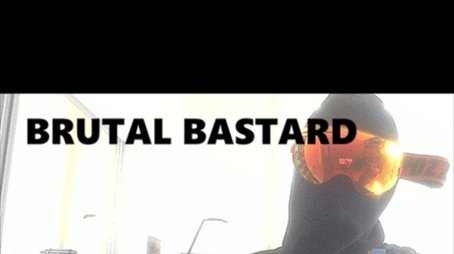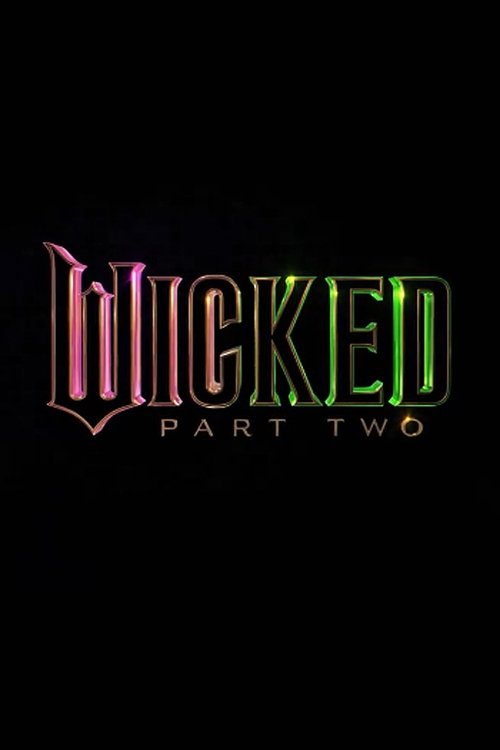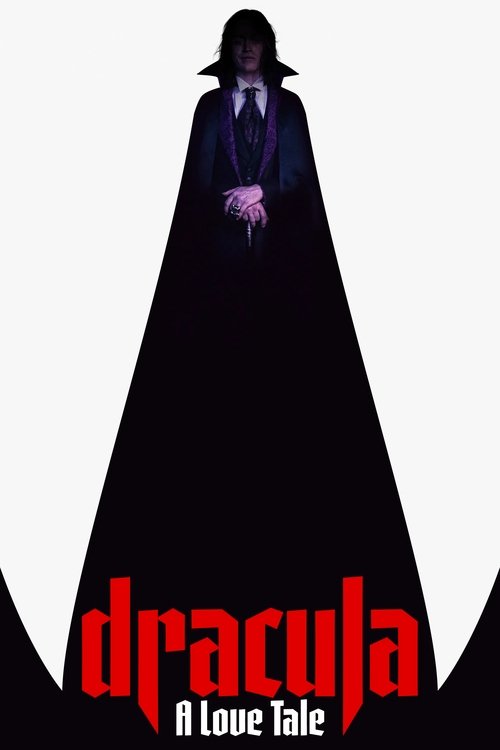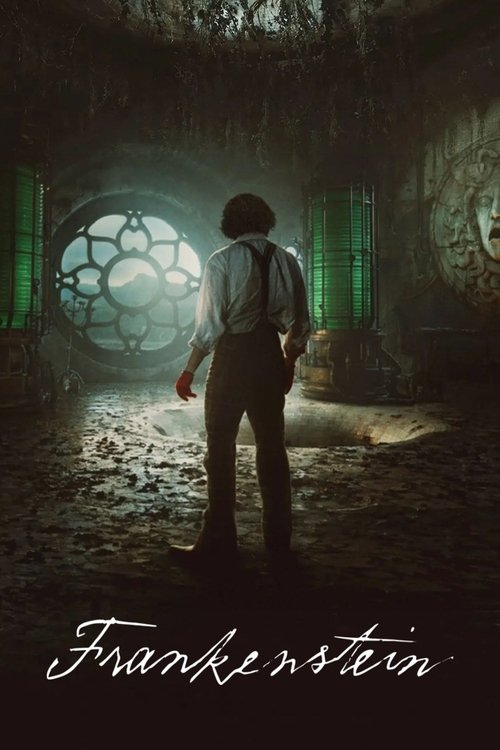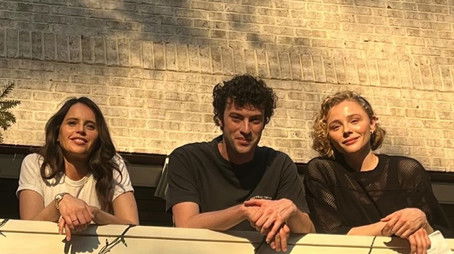
Ask Your Own Question
What is the plot?
A man dressed in a white suit, who will come to be known only as the Salesman, walks out onto a glass-walled penthouse balcony and finds a woman staring down at Basin City. He offers her a cigarette and speaks to her as if she has been running from something she cannot name; they kiss, and in the instant after their lips meet he draws a gun and shoots her once through the throat. The woman collapses into his arms and dies; the Salesman murmurs that he will never learn what she fled from and says he will cash her check in the morning before leaving the body on the balcony.
On the docks of Basin City, veteran police detective John Hartigan confronts a late-night horror. He charges into a warehouse to stop a young predator named Roark Junior from raping and murdering an eleven-year-old girl, Nancy Callahan. Junior is the son of Senator Roark, a powerful, corrupt politician who has spent money and influence to shield his boy. Hartigan's partner, Bob, who has accepted bribes from the Roark family, tries to talk the old cop out of the confrontation; Hartigan knocks Bob unconscious and pushes on alone despite a failing heart. In the dim warehouse Hartigan fights Junior's accomplices, shoots off the boy's ear, then his hand, and finally destroys his genitals as he attempts to save Nancy. As sirens wail in the distance, Bob recovers, returns to the scene, and -- acting on orders -- shoots Hartigan in the back. Nancy collapses and lies in Hartigan's lap as he passes out, thinking that giving his life would be a fair trade for rescuing the child.
Elsewhere in Basin City, a hulking, scarred man named Marv wakes up after a one-night intimacy with a blonde named Goldie. He finds her dead beside him, her throat cut, and a police radio outside the door. Framed by a crime scene that paints him as a killer, Marv flees as uniformed officers arrive. He vows to avenge Goldie. Paroled and suffering from a condition that causes memory lapses, Marv sees the world in bone-deep contrasts; his parole officer Lucille cautions him that he may be fabricating his memories because of that condition. Marv interrogates informants by brutal means, ascending from small-time crooks to a priest who confesses that the Roark clan arranged Goldie's murder. Marv shoots the priest point-blank. As he leaves the church a pale woman who resembles Goldie attacks him; he shrugs off the encounter as one of the hallucinations his condition can produce.
Marv traces the trail to the Roark family farm and is overpowered by an invisible, silent adversary -- a pale, mute killer named Kevin, who eats his victims. Marv regains consciousness in a subterranean cell and finds Lucille there; she had been investigating Marv's story and was captured. Lucille tells Marv that Goldie worked as a prostitute and that Kevin, who is cannibalistic, murdered her. The two manage to escape the cellar, but a squad of corrupt police officers ambushes them at the farmhouse. Those officers execute Lucille with gunfire; Marv retaliates and kills most of them in short, brutal fighting, sparing only their leader, who slinks away and reveals that Cardinal Patrick Henry Roark ordered Goldie's death. Marv follows the trail to Old Town, the red-light district run autonomously by the prostitutes, and there he encounters Wendy, Goldie's identical twin. At first Wendy takes him prisoner; once he persuades her of his innocence and of his desire for vengeance, Wendy leads Marv back to the Roark farm. In the farmhouse basement Marv sets a trap and confronts Kevin: Marv overpowers and kills the cannibal, tearing him apart in a violent struggle. He forces Cardinal Roark to confess on the spot; the cardinal admits that Kevin was his ward and that they murdered and consumed prostitutes as a perverse ritual to "consume their souls." Enraged, Marv kills the cardinal in the basement. Guards arrive and shoot him; he is captured and nursed back to health by the prison system.
Corrupt officers threaten to kill Marv's elderly mother if he will not confess to the murders of Kevin and the Roark men. Under duress, Marv signs a false confession. He faces trial, is convicted, and is sentenced to die in the electric chair. Wendy visits him in the days before his execution and thanks him for avenging Goldie; Marv accepts the deadly verdict and is led into the execution chamber, where the state puts a current through his body and he is electrocuted, dying in the chair.
Back when Hartigan is convalescing in a hospital after being shot in the back, Senator Roark arrives and makes the terms of his protection plain: Junior is alive but badly wounded, in a coma; to prevent scandal the senator will arrange for Hartigan to be prosecuted for Junior's crimes. If Hartigan tells the truth, Roark warns, his entire family will be killed. Hartigan refuses to betray Nancy and refuses to implicate the girl. Nancy, grateful, promises to write him every week. Over the years the senator keeps Hartigan under control: the letters Nancy sends arrive like clockwork, sustaining Hartigan through long years behind bars. After eight years the letters stop, and Hartigan receives instead a grisly message -- a severed finger. The senator's message is clear: Nancy is being threatened. To protect the girl Hartigan confesses to murders he did not commit and accepts a long prison stay.
Once paroled, Hartigan searches for Nancy, not realizing that someone is trailing him: a disfigured, yellow-skinned figure who watches silently. Hartigan finally finds the woman he saved working as an exotic dancer at a bar called Kadie's. Nancy Callahan has grown but keeps the vulnerable trust of the child Hartigan saved; she promises him her devotion. Hartigan intends only to escort her to safety, but he does not tell her everything he feels. When he realizes he has been set up by a plan to lead "them" -- forces in Roark's employ -- to Nancy, he and Nancy flee together in her car and hide in a roadside motel. During the drive Nancy confesses that she loves him; Hartigan, older and restrained by his sense of duty and propriety, cannot return the same way. While they hide in the motel a grotesquely deformed man bursts into the room; he reveals himself as Roark Junior, transformed by years of grotesque medical procedures into a yellow-skinned revenant. Junior seizes Nancy and, in a moment of fury and cruelty, hangs Hartigan from a rafters and drags Nancy away.
Hartigan does not stay dead. He frees himself from the rope, tracks Junior to the Roark farm, and confronts the boy again. This time Hartigan feigns the heart failure that has plagued him, causing Junior to lower his guard. When Junior reaches for his medical treatments, Hartigan moves in close, castrates him a second time, and then beats him until the boy is beyond consciousness. Hartigan leaves Junior dying, secures Nancy's escape by sending her away in her car with instructions to drive straight and to never look back, then returns to face the inevitable. Knowing that Senator Roark will never cease hunting Nancy for what he sees as his family's preservation, Hartigan turns a pistol on himself and shoots his own head, killing himself to remove the last living tie that could lead Roark to Nancy.
The city's underworld also spirals into violence in Old Town, the sovereign territory of the prostitutes. Shellie, who runs a small diner near Old Town, finds herself menaced by an ex-boyfriend, Jackie Boy, who drinks with friends and acts possessively. Jackie Boy harasses another sex worker, Becky, on the street. Dwight McCarthy, a man with a complicated past who loves Shellie and who has a prior intimate relationship with Gail -- the iron-fisted leader of Old Town's women -- intervenes and warns Jackie Boy to leave Shellie alone. That night Jackie Boy and his crew drive into Old Town looking to make trouble. When they move to attack Becky, Miho, a small, deadly assassin allied with Old Town and skilled with bladed weapons, ejects herself like a shadow into the fray and dispatches Jackie Boy and his thugs with knives and throwing stars. The woman who is Jackie Boy proves to be Detective Lieutenant Jack Rafferty, a famed cop whose death would breach the fragile truce between the city police and the prostitutes. Preserving Old Town's autonomy demands that the truth of Rafferty's death not reach the press; the madame of Old Town cannot allow the mob a pretext to invade.
Dwight transports the gang members' bodies to a tar pit for disposal, and there he is suddenly ambushed by an ex-IRA mercenary employed by the mob boss Wallenquist. The mercenary pins Dwight under a layer of tar and nearly drowns him. Miho returns in time to slice Dwight free and the mercenary flees into the city sewers carrying Jackie Boy's severed head. Dwight and Miho pursue him into the sewers, wrest the head back, and haul it to Old Town as proof of the death. Meanwhile the mob's enforcer Manute kidnaps Gail; Becky, under threat that her mother will be killed, betrays the prostitutes by giving the mob access and information. The mob prepares an all-out assault on Old Town, and Dwight negotiates the release of Gail by trading Jackie Boy's decapitated head. He hands the head over to the mob in exchange for Gail, but the head has been booby-trapped: Dwight has hidden explosives inside Jackie Boy's skull. He detonates the device at the exchange, killing Gail's captors and destroying the head. As the mob's hired guns flood the streets, the women of Old Town open fire; they gun down the mercenaries in a close-quarters shootout in alleys and on rooftops. Becky is wounded during the firefight but escapes with her life and flees to a hospital.
The corrupt structure of Basin City's power reveals itself in quieter, cruel manipulations as well. Years earlier, in the docks' warehouse, Hartigan had been shot by Bob, his partner. Bob's choice is part of a chain of betrayals tied to Senator Roark's determination to shield his son. After Hartigan's public disgrace and imprisonment the senator uses his influence to keep Nancy under on the string of fear and manipulation; when Hartigan finally caves to protect her he pays with his freedom and so that years later he can reclaim it and pay with his life.
In the weeks after Marv's killing spree Hillman's allies in the force and the city tighten their noose. Marv, already held in custody for the cardinal's murder, is kept alive until the day of his execution, which the state carries out by sending a lethal electrical current through his body in the electric chair. Before his death Marv's mother and Wendy visit; Wendy expresses gratitude for Goldie. Marv dies with the weight of the city's violence still on his broad shoulders.
Across town, other violent transactions play out in the margins. The Salesman, who moves through the city offering cigarettes to doomed individuals, reappears months after his rooftop murder. An injured and shaken Becky leaves a hospital talking to her mother on a cell phone, her voice full of tears and promises. In the elevator she meets the Salesman, now posed as a doctor; he addresses her by name, a chilling recognition. He offers her a cigarette, which she takes, and she cuts short her conversation with her mother. The camera lingers as the Salesman watches her end the call, and the scene closes on the implication that she will meet the same silent fate as the customer on the penthouse balcony.
Throughout Basin City the powerful keep each other's secrets: Senator Roark covers his family at any cost; mob bosses trade favors and bodies; the cops who uphold the law sometimes join the cover-ups. Hartigan gives up his life to keep Nancy from a predator and the corrupt senator; Marv pays with death after avenging a woman he loved; Dwight and Miho defend Old Town and repel an assault that would have cost many lives; Gail and the prostitutes enforce their sovereignty with lethal force. In the film's final moments Nancy drives away from the Roark farm in the car Hartigan sent with instructions, blind to police dispatches and the specter of her protector's suicide, heading toward a future that Hartigan has bought with his life. The city returns to its usual rhythms -- neon, rain, and the hum of corrupted lights -- while a man in white pockets his cigarette case and prepares for a new client. The narrative closes on the Salesman leaving the hospital's elevator, a quiet echo of the first killing on the penthouse balcony, and the camera pulls back from Basin City to end the story.
What is the ending?
The movie Brutal Bastard (2025) ends with the main character confronting his past and enemies in a final, intense showdown that resolves the central conflict, leaving the fates of the key characters clearly defined.
In the final sequence, the protagonist, a hardened and relentless figure shaped by a brutal upbringing and betrayal, faces off against the antagonist who embodies the source of his suffering. The scene opens with the protagonist tracking the antagonist to an abandoned industrial site, a place heavy with symbolic weight from their shared history. As they confront each other, the tension is palpable, with flashbacks interspersed showing the protagonist's journey of pain, survival, and determination.
The fight is raw and unrelenting, showcasing the protagonist's physical and emotional scars. Despite being outnumbered and wounded, he uses his cunning and sheer willpower to overcome the antagonist's forces. Key moments include the protagonist narrowly escaping a deadly trap and turning the tables by exploiting the antagonist's overconfidence.
As the antagonist falls, the protagonist stands amidst the wreckage, breathing heavily but victorious. The film then shifts to a quieter moment where the protagonist visits the grave of a lost loved one, symbolizing closure and the possibility of a new beginning. The final shot lingers on his face, a mixture of relief and lingering pain, as he walks away from the site, leaving the past behind.
Regarding the other main characters involved in the climax:
- The antagonist meets a definitive end in the final confrontation, their reign of terror conclusively stopped.
- The protagonist's closest ally, who had been captured earlier, is freed during the chaos and survives, hinting at a hopeful future.
- Secondary antagonists are either defeated or flee, their threats neutralized.
This ending ties up the story's themes of revenge, survival, and identity, showing the protagonist's transformation from a victim to a survivor who claims his agency.
Now, narrating the ending scene by scene in detail:
The climax begins as the protagonist arrives at the derelict industrial complex just as dusk settles, the fading light casting long shadows over rusted machinery and broken windows. He moves cautiously, memories flooding back--this was the place where his life was shattered years ago. The camera lingers on his clenched fists and determined eyes.
Suddenly, he is ambushed by two of the antagonist's henchmen. A brutal hand-to-hand fight ensues, gritty and visceral, with the protagonist using improvised weapons and his environment to his advantage. He sustains a deep cut on his arm but manages to incapacitate both attackers.
Pressing forward, he finds the antagonist waiting in the central hall, surrounded by remnants of their shared past--old photographs, broken tools, and graffiti marking the years of conflict. The antagonist taunts him, reminding him of past betrayals and losses. The protagonist responds with silence, his expression hardening.
Their duel is fierce, a mix of raw strength and calculated strikes. The antagonist gains the upper hand briefly, slamming the protagonist against a steel beam, but the protagonist's resolve hardens. He recalls the lessons learned from his mentor and the sacrifices made by his friends.
In a pivotal moment, the protagonist dodges a lethal blow and counters with a decisive strike that incapacitates the antagonist. As the antagonist lies defeated, the protagonist searches the room and finds his captured ally tied up but alive. He frees them, and they share a brief, wordless moment of relief.
The film then cuts to a somber scene: the protagonist at a small, weathered grave marked with a simple cross. He kneels, placing a token--a locket or a photograph--on the grave. His face shows a complex mix of sorrow, acceptance, and hope. The wind rustles the grass as the camera slowly pulls back.
The final scene shows the protagonist walking away from the graveyard, the first light of dawn breaking over the horizon. His silhouette is strong but solitary, symbolizing both the end of his brutal past and the uncertain path ahead.
Each main character's fate is clear:
- The protagonist survives, changed but alive, ready to face whatever comes next.
- The antagonist is definitively defeated and will no longer threaten the protagonist or others.
- The ally rescued in the final battle survives and is implied to support the protagonist moving forward.
- Other minor antagonists are either eliminated or escape, their influence diminished.
This detailed ending emphasizes the protagonist's journey through violence and loss toward a hard-won peace, closing the story with a balance of resolution and lingering emotional depth.
Is there a post-credit scene?
The movie titled Brutal Bastard produced in 2025 does have a post-credit scene. In this scene, after the main credits finish rolling, there is a brief but intense sequence showing the protagonist recovering in a dimly lit room, only to be confronted by a mysterious figure who hints at a larger, more dangerous threat looming ahead. The scene ends on a tense cliffhanger, setting up potential continuation or sequel material. This post-credit scene is designed to leave the audience with a sense of unresolved tension and anticipation for what might come next.
What motivates the main antagonist's violent actions in Brutal Bastard (2025)?
The main antagonist's violent actions are driven by a personal vendetta and a desire for ruthless control, as depicted through intense confrontations and calculated killings throughout the film.
How does the relationship between the protagonist and the secondary character evolve during the story?
The protagonist and the secondary character start with mutual distrust but gradually develop a complex alliance, marked by moments of tension and cooperation as they face shared threats.
What specific event triggers the turning point in the plot of Brutal Bastard (2025)?
A brutal ambush at an isolated location serves as the turning point, forcing the characters to confront hidden truths and shifting the story from survival to revenge.
Which character reveals a hidden identity, and how does this revelation impact the storyline?
A key character reveals a concealed past that redefines their role in the conflict, altering alliances and escalating the stakes for all involved.
What role does the isolated setting play in the development of the characters and plot?
The isolated setting intensifies the characters' psychological struggles and physical confrontations, creating a claustrophobic atmosphere that drives the narrative's tension and brutality.
Is this family friendly?
The movie titled Brutal Bastard produced in 2025 is not family friendly. It contains potentially objectionable and upsetting content for children and sensitive viewers, including brutal and bloody scenes, mature themes related to violence, and intense dramatic moments. The film's tone and presentation are minimalist but deal with tough questions and deconstruct a central character's troubled past, which may be emotionally heavy or disturbing.
Specifically, viewers might encounter:
- Violence and brutality that could be graphic or intense.
- Mature themes involving personal trauma and complex emotional struggles.
- A generally serious and possibly haunting atmosphere that may provoke introspection but could be unsettling for younger or sensitive audiences.
No detailed plot spoilers are revealed here, but the film's content and style suggest it is intended for mature audiences rather than children or those seeking light entertainment.

